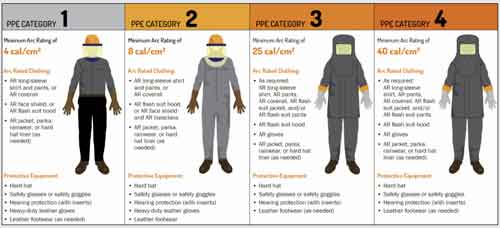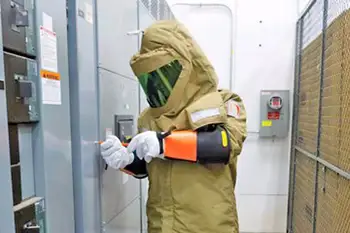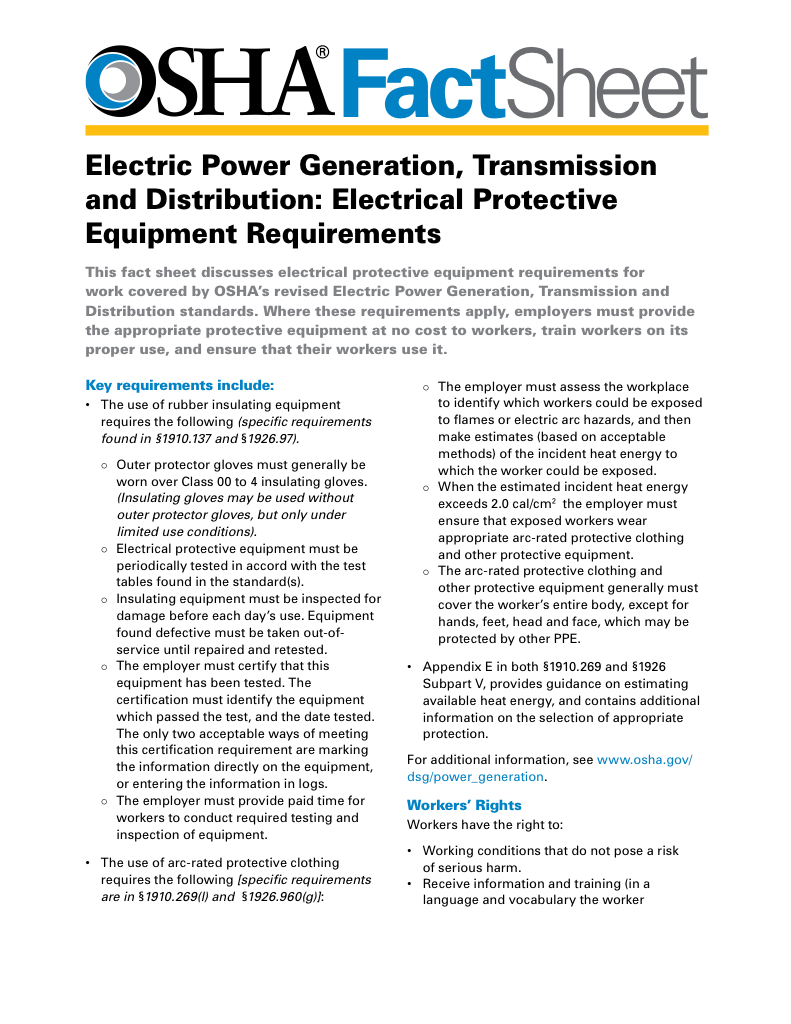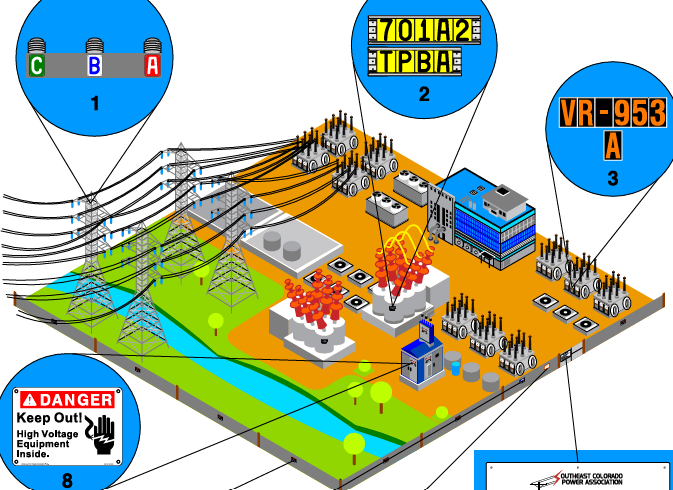Arc Flash PPE Requirements Chart Explained

Arc Flash Training CSA Z462 - Electrical Safety Essentials
Our customized live online or in‑person group training can be delivered to your staff at your location.

- Live Online
- 6 hours Instructor-led
- Group Training Available
Download Our OSHA 3875 Fact Sheet – Electrical PPE for Power Industry Workers

- Follow rules for rubber gloves, arc-rated PPE, and inspection procedures
- Learn employer obligations for testing, certification, and training
- Protect workers from arc flash and electrical shock injuries
The Arc Flash PPE Requirements Chart is a visual tool aligning NFPA 70E categories with required protective gear based on incident energy levels, ensuring workplace safety compliance.
What is the Arc Flash PPE Requirements Chart?
The Arc Flash PPE Requirements Chart maps NFPA 70E hazard categories to specific personal protective equipment (PPE) based on incident energy exposure, guiding appropriate gear selection for electrical safety.
-
✅ NFPA 70E Alignment: Categorizes tasks into four PPE levels, each with defined arc ratings and equipment requirements.
-
✅ Visual Guidance: Provides intuitive graphics detailing necessary PPE components per hazard category.
-
✅ Compliance Support: Assists in meeting safety standards by matching tasks with appropriate protective gear.
Understanding the Arc Flash PPE Categories
Arc Flash PPE Requirements Chart is vital for electrical safety professionals seeking a clear and visual breakdown of protection standards. Based on NFPA 70E guidelines, this chart aligns incident energy exposure levels with the required arc-rated (AR) protective equipment for each task. Whether you're assessing hazard levels or planning worker PPE, the chart provides task-based clarity—helping safety managers match the correct personal protective equipment with each job’s unique risk.
Request a Free Training Quotation
If you're working with high-calorie protection suits, our 40 Cal Arc Flash Suit page offers an in-depth look at components, compliance, and use cases. With categories ranging from 4 to 40 cal/cm², this tool ensures compliance, reduces injury risk, and supports smarter, faster PPE selection in energized environments. Selecting specialized gear for extreme scenarios? See our 100 Cal Arc Flash Suit details. Explore the complete PPE framework outlined by workplace safety standards in our Arc Flash PPE Requirements page, covering selection, compliance, and risk assessment.
NFPA 70E categorizes hazards into distinct PPE levels, each associated with a specific incident energy range measured in calories per square centimeter (cal/cm²). Our chart visually represents these categories, detailing the required PPE for each level to ensure workers are adequately protected. To better understand how each PPE category is defined, visit our detailed guide on the Arc Flash PPE Category page, which explains hazard levels from Category 1 to Category 4.
Test Your Knowledge About Arc Flash!
Think you know Arc Flash? Take our quick, interactive quiz and test your knowledge in minutes.
- Instantly see your results and score
- Identify strengths and areas for improvement
- Challenge yourself on real-world electrical topics
According to Table 130.7(C)(15) in the NFPA 70E standard, the appropriate PPE is determined based on the task and the associated incident energy exposure. For tasks rated 25 cal/cm², workers must wear a complete AR ensemble with a shirt, pants, or coverall system made from flame-resistant materials. In addition to clothing, face shields are essential to head and facial protection, offering a barrier against radiant heat and flying debris during an incident energy event. Proper selection of PPE from this table ensures compliance and significantly reduces the risk of injury in hazardous electrical environments. For comprehensive performance metrics on PPE, check out our page on PPE Performance.
Key Features of the Chart:
-
Visual Representation: The chart utilizes intuitive graphics to illustrate each PPE category, allowing for a clear understanding of the required protective gear at a glance.
-
Detailed Descriptions: Each visual is accompanied by a concise description of the PPE components necessary for that category, including clothing, headgear, face protection, and gloves.
-
Compliance Guidelines: The chart aligns with the latest NFPA 70E standards, providing up-to-date information to help organizations maintain compliance.
Selecting the right arc flash clothing is essential for compliance with NFPA 70E and CSA Z462 standards.
How to Use the Chart:
-
Identify the Hazard Category: Determine the task or equipment's hazard category based on an incident energy analysis or the PPE category method.
-
Consult the Chart: Refer to the corresponding section of the chart to view the required PPE for the identified hazard category.
-
Equip Accordingly: To mitigate the risk of injury, ensure that all personnel don the specified PPE before commencing work.
Explore the full range of arc flash safety gear required to minimize injuries from electrical incidents.
Matching PPE to Incident Energy Levels
Selecting the proper AR gear begins with identifying the electrical hazard protection levels outlined in the NFPA 70E PPE matrix. This matrix helps map out task-based protection, ensuring that the required gear by incident energy matches the severity of the exposure. Whether the task involves energized equipment or maintenance near switchgear, clothing requirements by cal/cm² serve as the benchmark for choosing the right level of PPE. Selecting the correct AR suit, gloves, or face shield ensures that workers remain protected based on the actual energy risk present, meeting regulatory requirements.
For insights into how full-body suits are selected and worn, visit our comprehensive Arc Flash Suit guide that covers ratings, design features, and NFPA 70E/CSA Z462 standards.
By utilizing this Arc Flash PPE Requirements Chart, organizations can enhance their electrical safety programs and ensure that workers are equipped with the appropriate protective gear for their tasks. This proactive approach promotes safety and ensures compliance with established electrical safety standards.
Related Articles:
Explore our Arc Flash Training Programs or contact us to Request a Free Training Quotation for group safety sessions and PPE consultation.








